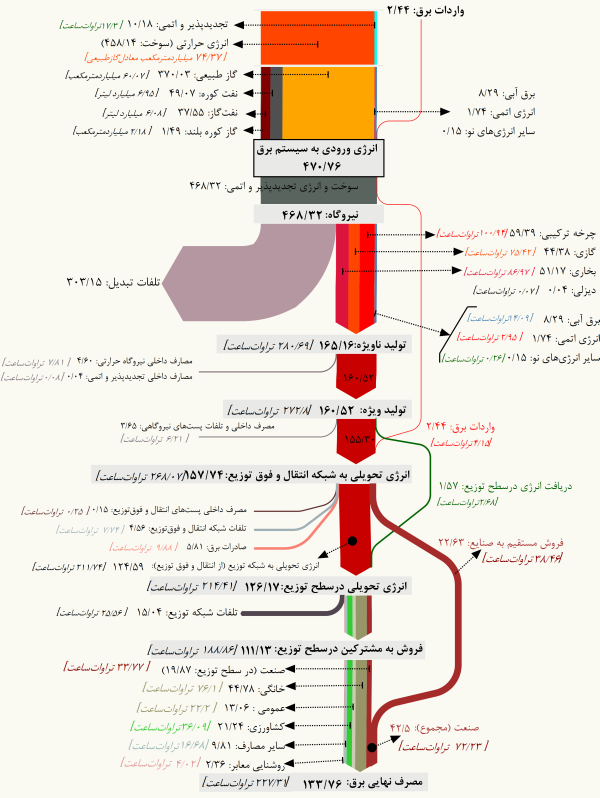Stimulated by the media frenzy and the focus Iran gets in recent days (nuclear deal, lifting of sanctions, Iranian oil production and effects on the world market, U.S. navy boats in Iranian waters) I thought it would be wise to look at the country from my narrow Sankey diagram perspective.
Any Sankey diagrams from Iran on the web? Of course!
The Ministry of Energy (MOE) of the Islamic Republic of Iran has been publishing the Energy Balance of the country: here is the Sankey diagram for 2009. This is from p. 67 of the bilingual report ‘Iran and World Energy Facts and Figures, 2009’ available on their web page.
Flows are in Mboe (Millions of barrels of oil equivalent). Out of the total 2587 Mboe primary total energy source, the largest chunk is oil (1585 Mboe), followed by gas (866 Mboe). More than half of the petroleum is exported (blue arrow). Total final consumption is 1144 MBoe. Note that nuclear energy is not shown in this energy balance. Apparently electricity production from nuclear power plants started in 2011 only.
Flows are not always perfectly to scale in the lower range: comparatively thin arrows have been left at a minimum width it seems. At the branch-offs of some wider arrows (oil, petroleum products) the gap has been color-filled, which makes the arrow look wider than it should be. A funny hump of the mauve arrow bridging the refinery node…
I confess I admire the Perso-Arabic script.
I have two more Sankey diagrams from another Iranian report, but these are for another post … soon.
